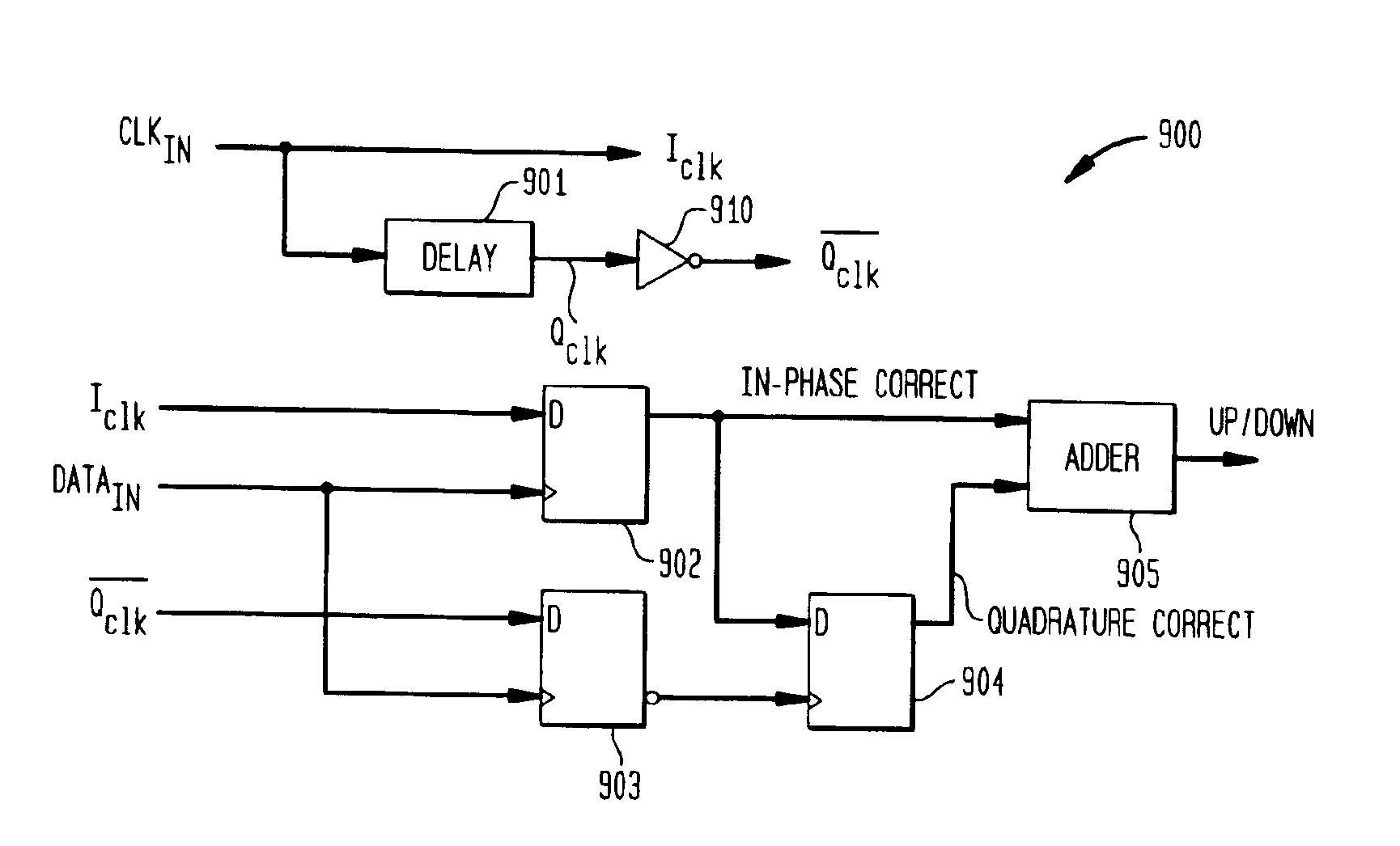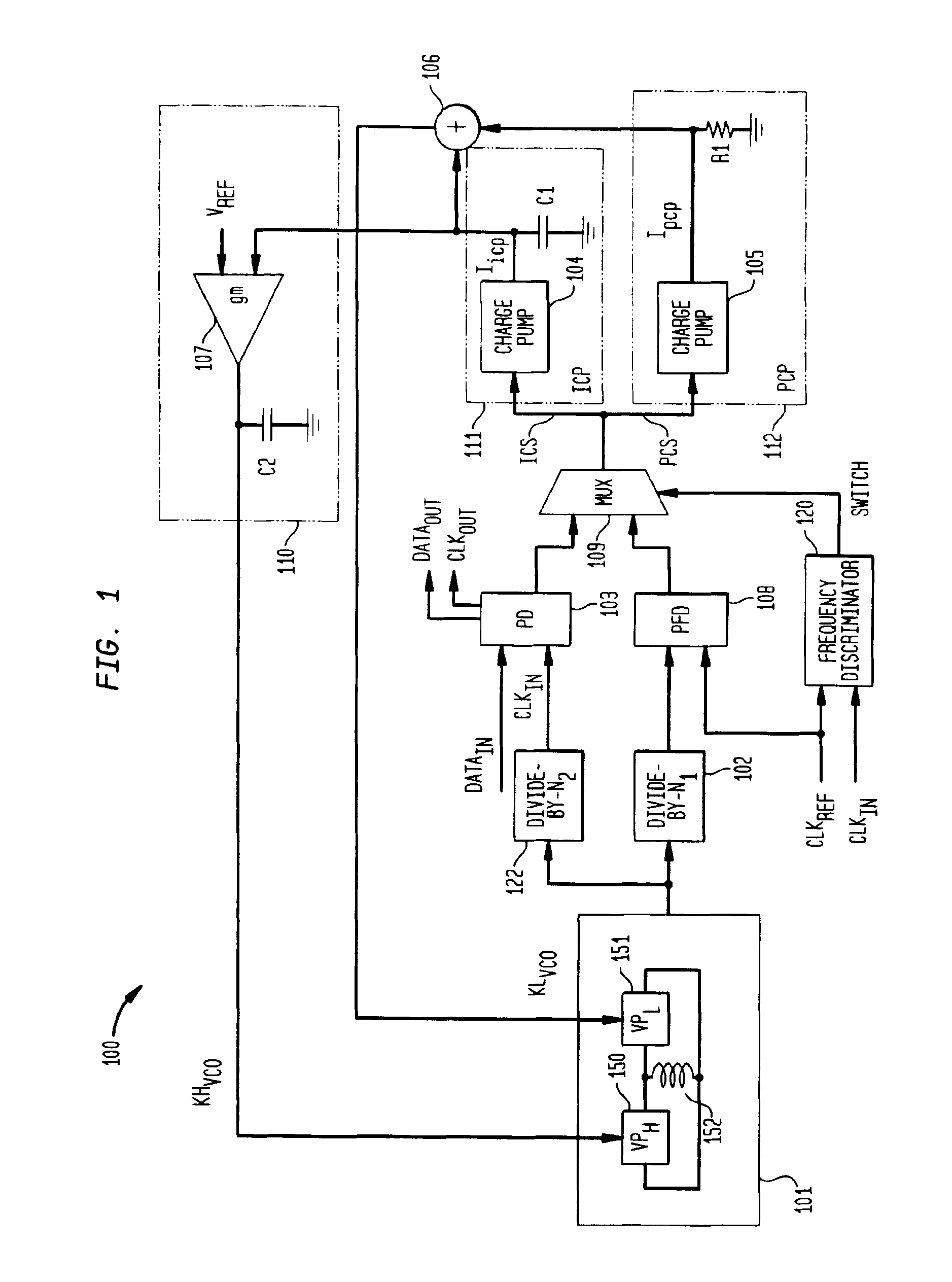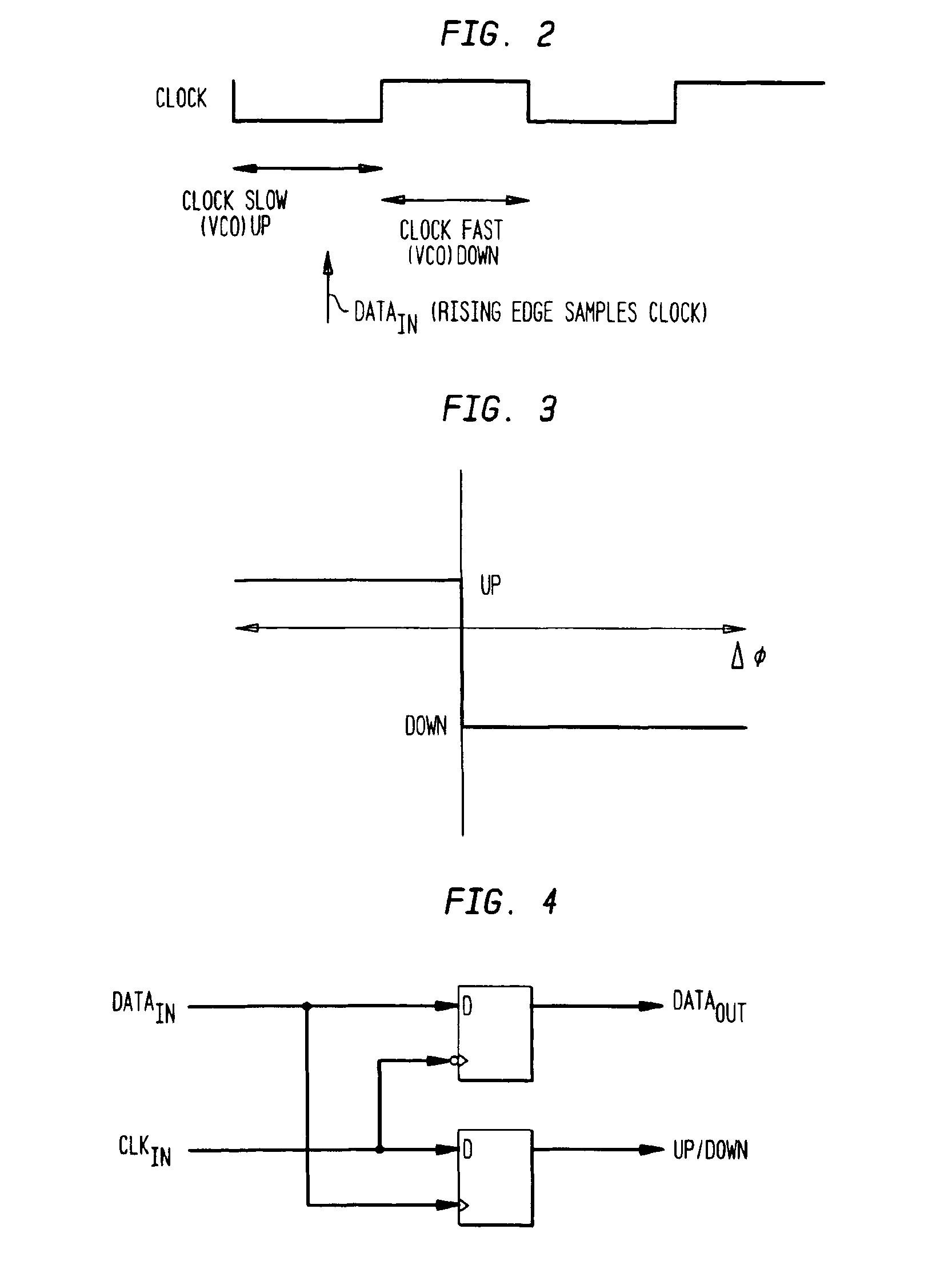Adaptive loop bandwidth circuit for a PLL
a technology of adaptive loop and bandwidth circuit, which is applied in the direction of digital transmission, pulse automatic control, instruments, etc., can solve the problems of clock signal, excessive jitter, difficult analysis, etc., and achieve the effect of increasing loop bandwidth, increasing loop bandwidth, and increasing loop bandwidth
- Summary
- Abstract
- Description
- Claims
- Application Information
AI Technical Summary
Benefits of technology
Problems solved by technology
Method used
Image
Examples
Embodiment Construction
[0021]FIG. 1 shows a block diagram of phase-locked loop (PLL) 100 operating in accordance with an exemplary embodiment of the present invention. PLL 100 comprises voltage controlled oscillator (VCO) 101, divide-by-N1 102, divide-by-N2 122, phase detector (PD) 103, integral charge pump (ICP) 111 having charge pump 104 and capacitor C1, proportional charge pump (PCP) 112 having charge pump 105 and resistor R1, voltage adder 106, and process / voltage / temperature (PVT) compensator 110 including amplifier 107 and capacitor C2. Though not explicitly shown in FIG. 1, charge pumps 104 and 105 are coupled to a common ground and biased with a reference voltage Vref. PLL 100 tends to synchronize the frequency of the signal provided by VCO 101 to a frequency that is a multiple of the frequency of the input data DATAin.
[0022]VCO 101 is shown as being implemented as an inductor-capacitor (LC) oscillator having a fixed inductor value and a variable capacitor value. The variable capacitor value may ...
PUM
 Login to View More
Login to View More Abstract
Description
Claims
Application Information
 Login to View More
Login to View More - R&D
- Intellectual Property
- Life Sciences
- Materials
- Tech Scout
- Unparalleled Data Quality
- Higher Quality Content
- 60% Fewer Hallucinations
Browse by: Latest US Patents, China's latest patents, Technical Efficacy Thesaurus, Application Domain, Technology Topic, Popular Technical Reports.
© 2025 PatSnap. All rights reserved.Legal|Privacy policy|Modern Slavery Act Transparency Statement|Sitemap|About US| Contact US: help@patsnap.com



